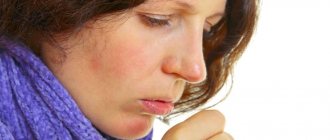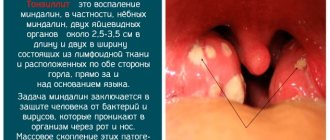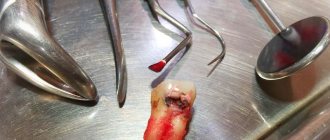Type of sputum
Doctors call sputum a substance that is formed from saliva, mucus and bronchial cells. In the absence of diseases, it should be transparent, and its amount should not exceed a tablespoon per day. It can occur in people who smoke, those who work in hazardous workplaces, and those who inhale dry air for a long time.
The color can vary from light to dark, it all depends on what disease has affected the human body.
The discharge of yellow sputum indicates diseases such as:
- bronchitis;
- pneumonia;
- sinusitis;
- hepatitis;
- various tumors;
- cirrhosis of the liver;
- gallstones.
Yellow sputum may be a sign of hepatitis.
A yellow-greenish tint may indicate the presence of:
- acute bronchitis, and purulent;
- pneumonia;
- tuberculosis.
The rusty color indicates vascular injuries, that is, the blood, having reached the oral cavity, has had time to oxidize and turn into clots. This can happen for several reasons:
- painful cough;
- pneumonia, which led to vascular injury;
- pulmonary embolism.
If you produce yellow-green sputum, you may suspect inflammation in the lungs.
Brown or dark sputum may also indicate the presence of blood. This is possible in the following situations:
- if a person has a congenital pathology in the form of a bulla, and it was close to the lungs and for some reason suddenly ruptured, in such a situation brown sputum is expectorated through the oral cavity without coughing;
- gangrene of one or two lungs can be accompanied not only by brown discharge with an unpleasant odor, but also by fatigue, vomiting, and elevated body temperature;
- development of bronchitis;
- with lung cancer, in addition to brown mucus, there is a cough, weight loss, and increased sweating;
- During tuberculosis, a paroxysmal cough with brown sputum occurs, increased sweating at night, loss of appetite, weight loss.
The cause of brown sputum may be a cancerous tumor in the lungs.
Gray sputum when coughing can be observed with:
- gangrene of the lung;
- oncological diseases;
- smoking;
- pulmonary edema.
White color is characteristic of the following pathologies:
- with ARVI, thick sputum with mucus occurs;
- in case of cancer (especially lungs), it has a white color with blood impurities, in addition there is weight loss and rapid fatigue;
- asthma, during attacks of which light or clear sputum is released.
Any color other than clear or white is considered pathological.
The discharge of white sputum is characteristic of asthma
What does brown sputum tell us when coughing?
In a healthy person, the glands of the trachea and bronchi secrete about 100 ml of tracheobronchial secretion daily. It covers the mucous membrane of the airways, thereby creating protection from dust and pathogenic bacteria.
In the presence of a pathogen or other provoking factor, the physical characteristics of this fluid change: the volume and viscosity increase so that as many irritating elements as possible are removed from the bronchial tree. Thickening of the secretion leads to a slowdown in its excretion and accumulation on the surface of the mucous membrane. Subsequently, this substance is expectorated during coughing.
Changes in the transparency and color of sputum occur due to the presence of macrophages and lymphocytes - immune cells capable of neutralizing foreign organisms. They penetrate the tracheobronchial mucus from the blood by increasing the permeability of the walls of blood vessels. Together with them, red blood cells penetrate into the mucous secretion, which, when disintegrating, turn it brown.
The color of sputum may change when coloring substances contained in the inhaled air enter it. “Smoker's Bronchitis” is a prime example of this. Then the expectorated dark clot of mucus, in addition to dead blood cells, contains tobacco tar. They also tint the discharged secretion brown.
Causes of wet cough
In a healthy person, phlegm or mucus is constantly excreted without irritating the receptors in the bronchi.
But during the inflammatory process, the composition of mucus and its consistency changes: viscosity increases, water content decreases and protein increases. In most cases, the causes of productive cough are infectious diseases of the respiratory tract (respiratory infections), including:
- viral infections;
- pneumonia;
- acute and chronic bronchitis;
- laryngotracheitis;
- whooping cough, etc.
The following can also trigger a cough with phlegm:
- allergy;
- heart failure;
- tuberculosis;
- cystic fibrosis;
- oncological diseases.
Any of these factors can cause mucus (phlegm) to build up, resulting in a cough. On the one hand, coughing helps remove mucus from the respiratory tract, and on the other hand, it leads to the spread of inflammation in the bronchi.
Cough in children: causes and treatment
What diseases cause such sputum?
Brown sputum when coughing indicates congestion in the respiratory system. Their development is promoted by inflammatory respiratory diseases, viral infections and other pathogenic factors that affect the viscosity of tracheobronchial secretions.
People with diseases characterized by:
- inflammation of the bronchi and lungs;
- necrosis of tissues of the respiratory organs;
- blockage of pulmonary blood vessels;
- the presence of pathological neoplasms in the respiratory tract.
The appearance of brown sputum during a sore throat indicates that the infection has spread down the larynx and invaded the trachea.
Bronchitis as a cause
The most common cause of brown sputum is bronchitis. On the bronchial mucosa there are many cells that are responsible for the functions of the body, and each has its own significance. The goblet is responsible for protecting the lungs and cleansing them. Cilia, moving upward, help the body get rid of dust and other impurities. The mucus closes the bronchi so that no negative factors can affect the body as a whole. In this case, the expectorated sputum is brown in color.
When the bronchi become inflamed, the cilia are unable to protect them, and dust, along with the infection, enters the bronchi, resulting in obstruction. This is exactly what the mechanism of development of bronchitis looks like, in which the cough attacks mainly in the morning.
Tuberculosis
The disease can be identified using the following symptoms:
- general malaise;
- fast fatiguability;
- shiver;
- dry painful cough, especially at night and in the morning.
One of the reasons for the appearance of brown sputum may be tuberculosis.
If the disease progresses, the skin may change to a pale color. There is weight loss and pain in the chest. Body temperature can reach 39-40 degrees.
We recommend reading: Cough in a child - all about the symptom: types, causes, treatment
Pneumonia
If shortness of breath, difficulty breathing, or pain in the sternum appears, this means that the process of infection of the lung tissue has begun. In this case, there is rapid fatigue, pain in muscle tissue, first a dry and then a wet cough, and at the same time coughing up brown sputum.
A complication of pneumonia can be an abscess, which appears due to infection of the lung tissue. This creates a cavity in the lungs where sputum collects.
In what cases is sputum normal?
The bronchial mucosa, consisting of cells, is covered with cilia. They are constantly on the move. The basis of sputum is mucus, which is produced by goblet cells. It is necessary to cleanse the body of all impurities in the form of dust, dirt, and microbes.
The release of clear sputum in a small amount is not a deviation and is necessary for the normal functioning of the bronchi
Without secretion, the bronchi would become covered with dust, soot and other harmful impurities, and accordingly, the tissues would be constantly inflamed. Therefore, a small amount of light-colored sputum should be gradually released from the body and come out.
Smoking
Tobacco smoking is fraught with a host of pathological changes in the upper and lower respiratory tract. If you believe medical statistics, numerous genetic mutations are found in the oral cavity, on the epithelium of the mucous membrane of the bronchi and lungs in smokers.
Smoking causes problems for many reasons. First of all, capillary permeability increases, blood leaves the vessels and settles in the sputum.
The body perceives the substance as a pathogenic organism and begins more active mucus synthesis. The result is oxidation of the hematological fluid.
In addition, destruction of small blood vessels is detected due to their stenosis or occlusion by cholesterol plaques.
This is a dangerous condition. Over time, the destruction of large main vessels and the development of malignant tumors occurs.
Bronchiectasis
Bronchiectasis of the lungs
Bronchiectasis is rarely primary. Those most at risk are representatives of hazardous professions, athletes, smokers, children who have had pneumonia and bronchitis.
The essence of the pathological process is the formation of sac-like structures in the area of the bronchial alveoli. They expand and are filled with serous-purulent exudate. The pus is multi-layered, multi-colored.
The condition is extremely dangerous, as it is fraught with the development of secondary infectious lesions of the lungs of an extensive type.
Oncological diseases
They occur frequently. Lung cancer, in its own way, holds the record for mortality and incidence.
The nature of the process is the degeneration of healthy lung tissue into atypical forms, followed by proliferation and infiltrative penetration into surrounding and distant organs and tissues through metastasis. The mortality rate of lung cancer is high.
There are other reasons not indicated in this list, but their proportion is so small that it is not of great importance. Brown sputum is always a warning sign.
Treatment of cough with phlegm
Expectorants
Expectorants include herbal preparations: licorice, marshmallow, thyme, ivy and others. They enhance the secretion of bronchial glands and facilitate the removal of mucus.
The effect of herbal medicines is short-lived: usually about 2-3 hours, so their use in pediatric practice is not recommended. Small children cannot cough up accumulated mucus themselves. Frequent use can lead to the accumulation of excessive secretions in the lungs, a gag reflex, and sometimes worsening the infection. It is also necessary to take into account that allergic reactions to medicinal plant extracts are possible.
Mucolytic drugs
Mucolytic drugs thin the sputum, making the mucus less thick and viscous, but its volume does not increase. Drugs in this group improve the physicochemical properties of sputum and reduce the adhesion of secretions to the walls of the respiratory tract. In combination with stimulation of the ciliated epithelium, the sliding and removal of mucus is facilitated.
Drugs that combine mucolytic and secretomotor effects are the most reasonable choice for the treatment of productive cough. Such drugs include: bromhexine, ambroxol, acetylcysteine and their analogues.
From dry cough to productive cough
Respiratory infections often begin with a dry cough. In this case, sputum is not released, and the pathogen that led to the cough begins to multiply and accumulate. This causes further inflammation of the respiratory system.
Very often, mucolytic drugs are used to convert a non-productive cough into a productive one. This is explained by the fact that with a non-productive cough:
- increased viscosity of secretions in the bronchi,
- the sliding of mucus along the bronchial tree is impaired,
- the activity of ciliated epithelial cells is insufficient.
In order to bring the pathogen out, you need to use medications that will not only promote expectoration, but also protect epithelial cells and restore their activity, which will affect the movement of mucus in the respiratory tract.
Smokers
Mostly brown sputum appears in a smoker in the morning. When a person sleeps, mucus accumulates, and when he wakes up, phlegm begins to leave the bronchi naturally. A person who smokes for a long time eventually develops so-called smoker's bronchitis. Moreover, the cough becomes his constant companion. Naturally, smokers do not monitor their health, so they do not pay due attention to the color of the discharge. They are accustomed to a morning cough and do not consider this a cause for concern. However, brown sputum is considered an ideal breeding ground for bacteria.
Thus, by introducing harmful smoke into the body, smokers slowly poison it with heavy elements. Therefore, it is better to give up such a bad habit in order to exclude more serious diseases and complications in the future. People who have continuously consumed harmful cigarette smoke for several years in a row need to cleanse their lungs. To do this, you can use breathing exercises, which are popular today, with which you can improve the health of the entire body. The doctor may also prescribe you expectorant medications or a more gentle healing option using inhalations. Visit the clinic and the doctor will tell you which method is best for you. The doctor will monitor your health throughout the course of therapy, so no complications will arise.
Smoker's chronic bronchitis
The development of this disease occurs gradually . First, a person coughs in the morning, then the intensity and frequency of the cough increases, and the expectorated sputum becomes brown, which is a sign of the presence of pus in its composition. In addition, smokers experience shortness of breath, and illnesses are much more complex and take longer to develop.
If a smoker does not quit smoking, certain changes occur in the lungs and bronchi: shortness of breath is accompanied by an accelerated heartbeat, and it becomes very difficult to cough up. However, the most dangerous and unpleasant consequence is COPD (chronic obstructive pulmonary disease).
And if phlegm is felt only in the morning, what is it?
In some pathologies, the secreted tracheobronchial secretion is expectorated only in the morning. This is explained by the fact that the fluid released during sleep accumulates in the lower parts of the nasopharynx, and then, when the body position changes, it begins to move down the trachea, simultaneously irritating the cough receptors. In a healthy person, the result of a morning cough is usually clear mucus.
However, this indicator changes due to the presence of foreign impurities:
- Brown sputum in the morning becomes one of the signs of “smoker's bronchitis.” The coloring of the secretion occurs due to the accumulation of tar and other combustion products of tobacco.
- The appearance of a morning cough with the release of a small amount of mucus may be a consequence of reflux esophagitis. With it, due to the weakness of the sphincter muscles, the contents of the stomach are thrown into the esophagus and throat. This provokes inflammation of the mucous membrane of the digestive tract, and then the trachea.
- Chronic inflammation of the bronchi. In this case, in the morning hours, a small amount of sputum is coughed up, the color of which becomes yellow or yellow-green during exacerbation. It occurs against the background of prolonged inhalation of caustic chemical compounds contained in the air (tobacco smoke, dust, exhaust gases, toxic fumes).
- Exacerbation of bronchiectasis. The patient complains of the appearance of sputum with pus in the morning, loss of strength, low-grade body temperature, shortness of breath, and bluish discoloration of the skin.
- Congestion in the bronchi and lungs is a specific symptom of heart disease.
Morning cough in children is considered a characteristic sign of adenoiditis - chronic inflammation of the pharyngeal tonsil of the lymphopharyngeal ring. Develops due to frequent ARVI.
Associated symptoms
They occur as additional, optional signs that make up the clinical picture.
It is important to keep in mind: dark mucus is never the only sign. The fact that you cough up brown mucus in the morning is not an indicator.
Accordingly, we can talk about the following characteristic symptoms:
- Increase in body temperature to subfebrile-febrile values. Indicates either an infectious process, or tuberculosis, or oncology, if elevated thermometer values are constantly maintained.
- An alarming symptom is constant pain in the chest when inhaling and exhaling. This is a direct indication of the presence of a pathological process in the lower respiratory tract. This phenomenon may be absent in the presence of focal small-segmental lesions.
- Breathing problems in the form of shortness of breath or suffocation are common. One differs from the other in intensity.
We recommend reading: Acute rhinitis: causes, symptoms and treatment
The described symptoms need to be considered in conjunction with the main manifestation - brown sputum when coughing and its shade. A specific diagnosis can only be made by a doctor based on the results of an objective study.
What to do if brown sputum appears?
A pulmonologist treats diseases associated with inflammation of the airways. You can get to him through a therapist who will give you a referral. Before visiting a specialist, it would be advisable to do a sputum test.
To do this, you need to purchase 2 sterile containers. The day before the test, drink plenty of warm water. In the morning, before hygiene procedures, you need to collect material for research: take 2-3 deep breaths and cough up sputum. Then spit approximately the same amount into each of the jars separately: for the clinical and bacteriological laboratory.
Diagnosis of some diseases will require testing several times.
Bromhexine for cough with sputum
Bromhexine has a pronounced mucolytic and expectorant effect. It reduces the viscosity of sputum, increases secretory activity, and activates the movement of epithelial cilia in the bronchi. Thanks to these effects, mucus is removed and it does not accumulate in the lungs. In addition, the drug enhances the effect of antibiotics, increasing their effectiveness in fighting bacterial infections.
Bromhexine is used to treat respiratory diseases in all age groups. It is available in various dosage forms, has no toxicity to the body, combines well with many other drugs and has few contraindications.
Bromhexine: use and dosage
Diagnosis of sputum by consistency and smell
In order to evaluate this criterion, it is necessary to expectorate sputum into a transparent glass container, evaluate it immediately, and then remove it, cover it with a lid, and let it sit (in some cases, the sputum may separate, which will help in diagnosis).
- Mucous sputum: it is released mainly during ARVI;
- Liquid colorless is characteristic of chronic processes developing in the trachea and pharynx;
- Foamy white or pinkish sputum is released during pulmonary edema, which can accompany both heart disease and inhalation gas poisoning, pneumonia, and inflammation of the pancreas;
- Sputum of a mucopurulent nature can be released with tracheitis, sore throat, bacterial bronchitis, complicated cystic fibrosis and bronchiectasis;
- Vitreous: characteristic of bronchial asthma and COPD.
An unpleasant odor is characteristic of complicated bronchiectasis or lung abscess. A fetid, putrid odor is characteristic of lung gangrene.
If the sputum separates into two layers when standing, it is probably a lung abscess. If there are three layers (the top one is foamy, then liquid, then flaky), this may be gangrene of the lung.
Possible complications
Over time, smokers may develop malignant neoplasms in the oral cavity, upper and lower respiratory tract. With the progressive course of pneumonia, there is a risk of developing severe respiratory failure, which is treated in an intensive care unit with the help of artificial ventilation. If large vessels are damaged, pulmonary hemorrhage may occur - this condition requires urgent hospitalization in the intensive care unit.
Treatment methods
Therapy is specific and depends on the symptom of which disease is cough with brown secretion. The most commonly prescribed medications are:
- Non-steroidal anti-inflammatory analgesics. They suppress the activity of the inflammatory process and relieve pain. These include “Depiofen”, “Ibuprofen”, “Ketanov”, “Arthrocol”.
- Expectorants and mucolytics – “Mukolvan”, “Lazolvan”. They dilute mucus and facilitate the process of its removal.
- Bronchodilators - dilate the bronchi, making breathing easier.
Surgical interventions are indicated for some forms of tuberculosis, as well as for oncological pathologies.
Treatment
Help before diagnosis
Long-lasting, regularly expectorated sputum is a reason for a mandatory visit to the doctor. If you are coughing up liquid purulent contents with your mouth full, there is hemoptysis or rust-colored sputum, a visit to a medical facility should be urgent. Before making a diagnosis, it is recommended to drink plenty of warm alkaline drinks, expectorant herbal teas and medications, and breathing exercises.
Conservative therapy
There are a large number of pathologies in which sputum is coughed up; treatment depends on the etiology and mechanism of development of the disease. Conservative measures include the use of pharmacological agents and physiotherapeutic procedures, physical therapy. Medicines can be divided into the following groups:
- Etiotropic.
Antibiotics are prescribed for bacterial infections, taking into account the sensitivity of the microflora. When treating tuberculosis, combinations of anti-tuberculosis drugs are used. Antifungal medications are indicated for fungal diseases, anthelmintic medications for helminthic infestations. - Pathogenetic.
Includes expectorants. During treatment, sputum becomes more liquid and is better removed from the bronchi. Preference is given to mucolytics and mucoregulators. The group of pathogenetic agents also includes bronchodilators and corticosteroid hormones used for bronchial obstruction. For malignant neoplasms, antitumor medications are recommended.
Physiotherapeutic treatment is actively used for a number of pulmonary diseases. Patients are prescribed medicinal inhalations and breathing exercises. Sputum is cleared well after percussion massage of the chest. Patients are trained in postural drainage techniques. If necessary, sanitary bronchoscopy is performed.
Traditional medicine
Taking some folk remedies will help facilitate the process of mucus discharge, as well as improve its dilution. An infusion of pine buds in milk, which must be kept for about one hour, has worked well. It has a softening and moisturizing effect on the mucous membrane of the bronchial tree.
A decoction of marshmallow grass, mint leaves and plantain, prepared in a water bath, is good for removing phlegm. It must be taken at least three times a day, preheated. You can drink onion broth with sugar, but it does not taste very good.
If a symptom such as a cough with brown sputum appears, it is better not to self-medicate, but to seek help from a doctor! He will prescribe the necessary examinations to identify the cause of such a cough and recommend effective treatment methods.
Sputum without cough in smokers
The presence of a bad habit negatively affects the functioning of the respiratory system and causes various pathological reactions. People who regularly inhale cigarette smoke are characterized by mutational changes in the epithelial cells of the oral cavity and bronchi.
Harmful substances that are released during tobacco combustion provoke an increase in the permeability of the vascular wall of the bronchial capillary. As a result, red blood cells located in the vascular bed penetrate into the bronchial lumen. Due to breakdown and oxidation, mixing with sputum occurs. The body's reaction is expressed in the rapid disposal of red blood cells that have entered the respiratory tract.
Brown sputum, which is saturated with toxic resin, a carcinogen, contributes to poisoning of the body. If you ignore the primary signs, the risk of developing dangerous diseases that originate in weak bronchi increases. A person who smokes suffers from a cough that becomes more intense in the morning.
This is explained by the fact that at night a person takes a horizontal position, as a result of which purulent and mucous masses accumulate in the bronchi and lungs. After waking up and taking a vertical position, an irritating effect occurs, which is expressed in a cough with brown sputum.
Chronic bronchitis of a smoker is dangerous. The pathological condition cannot be treated and poses a danger to health and life. Therefore, if there are no signs of a cold and you have a cough with brown sputum, you need to give up the bad habit and seek help from a doctor.
Possible causes of sputum without cough and additional symptoms
Sputum is mucus that is secreted by glandular cells of the trachea, nasal cavity, paranasal sinuses and bronchi. Normally, no more than 100 ml of mucus accumulates in the tracheobronchial tree per day. It has bactericidal properties and is involved in the removal from the respiratory tract:
- dust;
- allergens;
- pathogenic agents.
When the mucous membrane is irritated, the activity of glandular cells increases 10 times or more. Therefore, in case of illness, up to 4 liters of pathological sputum are produced per day.
Expectoration of mucus without coughing is a nonspecific symptom that accompanies pathologies of various systems:
- respiratory;
- digestive;
- endocrine;
- nervous.
To find out the cause of the condition, you need to determine:
- the nature of sputum - elasticity, transparency, color, smell;
- associated symptoms – chest pain, sore throat, burning sensation in the nose;
- factors that provoke exacerbation are strong odors, physical activity, drinking hot drinks, etc.
Expectoration of mucus without coughing in half of the cases indicates damage to the nasopharynx or bronchopulmonary system.
Worm infestation
If a child or adult does not cough up clear or white sputum, the cause may be helminthiasis. In the acute phase, parasite larvae circulate in the blood and enter the bronchi. They irritate the mucous membrane, causing a productive cough. A person complains about:
- chest pain;
- swelling of the mucous membranes;
- shortness of breath;
- nausea.
When the mucus is swallowed, the worms enter the intestines, where they develop into adults. In the later stages, helminthiasis manifests itself:
- abdominal pain;
- unstable stool;
- weakness;
- sleep disturbance;
- elevated temperature;
- convulsions.
We recommend reading: Preventing colds during pregnancy: how can an expectant mother avoid getting sick?
With a chronic disease, immunity decreases, so rhinitis, tracheitis, and influenza often recur.
Esophageal diverticulum
An esophageal diverticulum is a saccular bulge in the wall of the esophagus. It manifests itself as dysphagia, bad breath, and a feeling of a lump in the throat. Many people experience hypersalivation - excessive production of saliva, so they complain of copious sputum discharge without coughing attacks.
Associated symptoms depend on the location of the diverticulum. The most striking clinical picture when a protrusion forms in the clavicle area:
- change in voice timbre;
- nausea;
- scratching in the throat;
- expectoration of thin sputum;
- regurgitation of food;
- backflow of mucus from the esophagus into the throat.
Large diverticula put pressure on the respiratory system, causing coughing. It is combined with chest pain and dizziness.
Inflammation of the adenoids
Sputum without cough in a child appears against the background of adenoiditis. This is the name for inflammation of an enlarged nasopharyngeal tonsil. The adenoids block the nasal passages, so viscous secretions accumulate in the nasal cavity. During sleep, it flows into the throat through the back wall of the pharynx.
Manifestations of adenoiditis:
- night snoring;
- violation of nasal breathing;
- coughing up yellow mucus;
- restless sleep;
- headache;
- elevated temperature.
There is no cough while awake. It occurs in the morning or immediately after waking up due to irritation of the throat by nasal secretions. If left untreated, the Eustachian tube becomes inflamed (eustachitis), so the child complains of decreased hearing acuity and ear pain.
Sjögren's syndrome
Sputum without fever and cough is one of the signs of Sjögren's disease. It is characterized by damage to connective tissue and exocrine glands. Accompanied by sinusitis and tracheobronchitis, separation of rusty sputum.
Symptoms of Sjögren's disease:
- muscle and joint pain;
- dry eyes;
- seizures in the corners of the mouth;
- violation of the act of swallowing;
- prostration;
- dry tongue;
- formation of crusts in the nose;
- enlargement of the parotid glands.
The mucous membrane of the throat dries out and acquires a bright red tint. If the glands are insufficient, the saliva becomes viscous.
Due to dysphagia (impaired swallowing), the patient cannot swallow it. Therefore, there is a feeling of mucus accumulation in the throat.
Allergy
Sputum production without coughing is one of the signs of a respiratory allergy. Irritants (allergens) are:
- medicines;
- plant pollen;
- Food;
- fumes from household chemicals;
- dust mites.
Manifestations of respiratory allergies:
- labored breathing;
- redness of the throat mucosa;
- nasal congestion;
- lacrimation (with hay fever);
- pain when swallowing;
- hoarseness of voice.
Depending on the location of the inflammation, the allergy occurs with or without a cough.
Patients complain of expectoration of clear, viscous sputum, which sometimes becomes glassy. In the absence of treatment, the clinical picture is supplemented by new symptoms - spasmodic cough, shortness of breath, swelling of the mucous membranes.
Pharyngitis, laryngitis, tonsillitis
Phlegm in the throat without cough in children and adults occurs due to inflammation:
- palatine tonsils – tonsillitis;
- pharynx – pharyngitis;
- larynx - laryngitis.
If the secretion is transparent, this indicates the onset of the disease or the attenuation of inflammation. In the absence of complications, the cough does not bother you, and small amounts of sputum are expectorated. If it becomes thick and green, purulent inflammation is possible.
The release of viscous mucus without coughing after laryngitis is a sign that the inflammation has become chronic.
Sinusitis and rhinitis
Thick mucus is released without coughing in case of inflammation of the nasopharynx and paranasal sinuses. Copious sputum is expectorated in the following diseases:
- Rhinitis (runny nose). Inflammation of the nasal mucosa is accompanied by the secretion of viscous mucus. Its transparency and elasticity depend on the form of the disease. An infectious runny nose produces yellow or green mucus. In people with insufficient tone of blood vessels, vasomotor rhinitis occurs, in which a transparent secretion is formed. With atrophic rhinitis, foul-smelling green sputum occurs.
- Sinusitis. When the maxillary sinuses become inflamed, sinusitis occurs, the ethmoid sinuses - ethmoiditis, the sphenoid sinuses - sphenoiditis, and the frontal sinuses - frontal sinusitis. If you cough up white, thick mucus without coughing, the cause of the illness is a viral infection or allergy. With bacterial and fungal inflammation, it acquires a yellow or green tint and an unpleasant odor.
Expectoration of mucus without coughing occurs mainly in the morning, as during the night it flows down the back wall of the throat into the hypopharynx.
Other reasons
Foul-smelling mucus without coughing is a dangerous symptom that occurs against the background of purulent inflammation of the ENT organs. Without treatment, complications are possible - abscess and gangrene of the lung, sepsis (blood poisoning).
Possible causes of expectoration:
- lungs' cancer;
- pulmonary syphilis, disintegration of syphilitic gum;
- bronchopulmonary carcinoma;
- cystic fibrosis;
- pulmonary mycosis;
- actinomycosis;
- bullous disease;
- pleural empyema;
- COPD
Yellow sputum without cough is a sign of bacterial diseases of the nasopharynx. If clots of dried blood are found in it, this indicates mucopurulent inflammation. Brown sputum in the morning without cough occurs with bronchiectasis and cardiac pathologies.
Causes of mucous sputum
Chronic rhinitis
Cough with mucous sputum during rhinitis is caused by irritation of the back wall of the pharynx by flowing mucus. The patient experiences soreness and a sensation of a foreign body in the throat, to eliminate which a cough reflex occurs. Expectoration of a small amount of clear discharge occurs in the morning after sleep, as well as during prolonged periods of lying down. After coughing up mucous sputum, the discomfort disappears.
Pharyngitis
For inflammation of the pharynx, a dry cough is typical, but sometimes it turns into a wet cough with the release of mucous sputum. Pharyngitis is manifested by expectoration of a small amount of clear mucus that does not have an unpleasant odor. The symptom persists for 3-5 days, combined with a constant sore throat. An attack of coughing with expectoration of sputum begins without visible provoking factors, but can intensify with loud speech or inhalation of cold air.
Chronic hyperplastic laryngitis
This pathology is characterized by the release of a scant amount of mucous sputum in the morning, accompanied by a sore throat and coughing. The symptom bothers a person for 3 weeks or more. For laryngitis, a constant sensation of a foreign body and discomfort in the throat is pathognomonic. An attempt to cough results in the appearance of a small amount of mucus, usually without bringing relief.
Tracheitis
The disease manifests itself with the release of clear mucus after a paroxysmal painful cough. Gradually, the volume of mucous sputum increases and it becomes cloudy. If tracheitis develops against the background of a bacterial infection, purulent streaks appear in the mucous secretion. Patients complain of frequent cough paroxysms that occur when laughing, talking loudly, or taking deep breaths.
Bronchitis
Coughing up medium or large amounts of mucous sputum is a typical sign of bronchial catarrh. In an acute process, a constant cough and the discharge of clear or cloudy mucus without an odor are disturbing. Symptoms last 1-3 weeks. In chronic bronchitis, expectoration of mucous discharge lasts several weeks or even months. Coughing up mucous sputum in the morning is typical of smoker's bronchitis.
Mucous sputum
Atypical pneumonia
Expectoration of large amounts of mucus occurs with pneumonia of viral or mycoplasmal etiology. Sputum production begins 2-4 days after the onset of the disease. The mucus is clear, without pathological inclusions, sometimes it is viscous and difficult to cough up. The symptom is supplemented by febrile fever and chest pain. If coughing and expectoration of mucous sputum lasts more than 3 months, prolonged pneumonia is diagnosed.
Whooping cough
A cough with expectoration of mucous sputum is characteristic of the period of resolution of the infectious process. At this time, cough paroxysms become rare and less durable; after an attack, the child spits out clear mucus in small quantities. Given the severity of whooping cough, symptoms last from several days to several months. Gradually, the amount of secreted mucous sputum decreases.
Pulmonary edema
The release of clear sputum when coughing is observed at the stage of alveolar edema, when fluid enters the lungs from the blood vessels. The condition develops suddenly, the patient experiences difficulty breathing and tries unsuccessfully to clear his throat. The amount of mucus secreted increases. In severe cases, instead of mucous sputum, pink foam appears when breathing and coughing, indicating the entry of red blood cells from the blood into the alveoli.
Lung adenocarcinoma
In the initial stages of the disease, a person is bothered by periodic coughing, accompanied by the release of liquid transparent mucus. As a malignant tumor progresses, a large amount (up to 1-2 liters per day) of watery sputum is formed in the lungs and bronchi, which the patient is forced to constantly cough up to make breathing easier. If adenocarcinoma grows into surrounding tissue, the mucus is replaced by bloody sputum.
Foreign body of the bronchus
If the foreign object is small, breathing is preserved. The patient is bothered by a periodic cough, during which clear liquid mucus is coughed up. Symptoms are observed until the foreign body is removed. If this does not happen, inflammation develops in the bronchus with an increase in the amount of mucous sputum secreted, which over time becomes more cloudy and viscous.
What to do if you produce sputum without coughing?
If sputum is produced for a long time, consult a physician or pulmonologist. During the interview, the doctor will clarify:
- how long ago the symptom appeared;
- presence of bad habits and occupational hazards;
- tendency to allergic reactions.
To determine the cause of expectoration of mucus without coughing, a diagnosis is carried out:
- physical examination - examination of the throat, listening to the lungs;
- endoscopic examinations – broncho-, rhino- and pharyngoscopy;
- hardware methods - MRI of the chest, radiography of the lungs, ultrasound of the pleural cavity;
- laboratory tests - microscopic examination of sputum, general blood test, allergy tests.
To exclude helminthiasis, fungal infection of the lungs and syphilis, an enzyme-linked immunosorbent test is prescribed to determine antibodies to the pathogen. If tuberculosis is suspected, the quantiferon test and the Mantoux test are recommended.
Treatment options depend on the cause of excessive mucus production. Conservative therapy involves taking medications, physical procedures - magnetic therapy, inhalations, chest massage, UHF therapy. The basis of pharmacotherapy is:
- antibiotics – Doxycycline, Amoxiclav, Augmentin;
- anthelmintics – Vermox, Trichlorophen, Piperazine;
- anti-tuberculosis drugs - Pyrazinamide, Ethionamide, Isoniazid;
- antifungal drugs - Itraconazole, Fluconazole, Isavuconazole.
To facilitate the removal of sputum, mucolytic and expectorant drugs are used - Mucaltin, Tussin, Bronkatar, ACC.
There are several dozen diseases in which sputum is expelled without coughing. Some of them do not pose a threat to health, while others are fraught with dangerous complications. Therefore, if such a symptom appears, you should not postpone a visit to a therapist or pulmonologist.
Causes of sputum formation
Causes of purulent sputum
The appearance of purulent yellow or yellow-green discharge indicates the presence of a severe acute respiratory infection or an exacerbation of a chronic inflammatory disease of the respiratory tract. Purulent, foul-smelling sputum released with coughing accompanies various destructive processes of the lungs and is observed when pathological contents stagnate in bronchiectasis. The most common causes of purulent secretion are:
- Bronchitis:
acute purulent bronchitis, chronic purulent process in the acute phase. - Bronchiectasis:
bronchitis or mixed variant of COPD, bronchiectasis. - Pulmonary destruction:
lung gangrene, lung abscess. - Neoplasms:
decaying lung cancer.
Causes of thick/sticky sputum
Coughing up viscous mucus or mucopurulent secretion occurs in most diseases of the bronchopulmonary system. Any acute respiratory pathology manifests itself as an unproductive cough with thick, light or yellowish sputum. Chronic diseases are accompanied by the release of viscous secretions during remission. The most common coughing up of thick mucus is observed in the following pathologies:
- Acute respiratory infections:
tracheitis, bronchitis, pneumonia. - Hereditary diseases:
cystic fibrosis, Kartagener syndrome. - Pulmonary mycoses:
candidiasis, aspergillosis, zygomycosis. - Chronic lung diseases:
COPD, bronchial asthma, chronic bronchitis.
Causes of mucous sputum
Some diseases of the respiratory system are manifested by the discharge of thin, watery mucus. Sometimes such sputum is released in single spits, but in a number of diseases there can be a lot of it. Coughing with mucus is often observed in acute airway infections. Mucous sputum, the causes of which are associated with chronic pathology, is coughed up during remission. Excessive production of clear mucus occurs due to the following conditions:
- Manifestation of acute respiratory diseases:
bronchitis, pneumonia. - Remission of chronic respiratory pathology:
COPD, chronic bronchitis. - Attack period of bronchial asthma.
- Infiltrative pulmonary tuberculosis.
- Neoplastic process:
non-small cell cancer, pulmonary adenomatosis. - Digestive diseases:
GERD.
Causes of yellow sputum
Often the sputum secreted by the patient turns yellow due to the activation of bacterial microflora. The appearance of such mucus in the morning may occur due to an admixture of nasal secretions that flow into the trachea during sleep. Sometimes sputum acquires a rich yellow tint due to food colorings and an increased content of eosinophils. The main diseases with the release of yellow sputum:
- Diseases of the nose and paranasal sinuses:
rhinitis, sinusitis. - Acute diseases of the respiratory system:
bronchitis, tracheitis, pneumonia. - Chronic respiratory diseases:
chronic bronchitis, bronchiectasis, COPD. - Eosinophilic infiltrates:
ascariasis, hookworm, drug allergies. - Specific infections:
pulmonary forms of syphilis, tuberculosis.
Causes of mucopurulent sputum
Expectoration of mucus with pus indicates an acute, advanced stage of bronchopulmonary disease. Sometimes mucopurulent sputum is rusty in color and may contain streaks or droplets of blood. Simultaneously with the appearance of pathological impurities, the volume of discharge increases. The main diseases in which there is coughing of mucopurulent contents:
- Acute diseases of the bronchi and lungs:
bronchitis, pneumonia. - Chronic pathology of the respiratory tract:
chronic bronchitis, COPD, the presence of bronchiectasis. - Specific diseases:
tuberculosis of the bronchi, lungs, pulmonary syphilis. - Rare hereditary pathology:
cystic fibrosis. - Malignant neoplasms:
bronchopulmonary carcinoma. - Mycoses of the lungs:
actinomycosis.
Causes of foul-smelling sputum
The strong unpleasant odor of sputum is due to stagnation of the contents of the cavity formations of the lungs, putrefactive processes associated with the activity of anaerobic microflora. When such a cavity is drained into the bronchus, a large amount of foul-smelling semi-liquid secretion is coughed up. Morning sputum sometimes has a strong smell due to impurities in nasopharyngeal secretions. The main pathologies accompanied by this symptom include:
- Suppurative pulmonary diseases:
lung abscess, lung gangrene, pleural empyema. - Neoplastic processes:
disintegration of a cancerous tumor. - Specific infections:
disintegration of syphilitic gumma, drainage of tuberculous cavity. - Bronchiectasis.
- Diseases of the nasopharynx:
ozena.
Causes of green sputum
Green sputum is the result of bacterial infection and stagnation of secretions in the respiratory tube, bronchiectasis, and cavity formations. This discharge usually has a purulent, mucopurulent character, and sometimes has an intense putrefactive odor. Coughing up green contents may indicate a serious bronchopulmonary disease, often observed with pathologies such as:
- Acute diseases of the respiratory system:
bronchitis, pneumonia. - Pulmonary purulent destruction:
gangrene, lung abscess. - Suppurative diseases of the pleura:
pyothorax. - Respiratory tuberculosis:
fibrous-cavernous pulmonary tuberculosis, pleural empyema with tuberculous pleurisy. - Bronchiectasis of any origin.
- Hereditary diseases:
cystic fibrosis.
Diagnostics
Diagnosis of diseases in which sputum is produced is carried out by pulmonologists or therapists. During the survey, the duration of the illness, the presence of occupational hazards, and the connection with smoking are clarified. The examination reveals signs of hypoxia and symptoms of distal hypertrophic osteoarthropathy. The following methods help to finally find out why the patient is coughing up sputum:
- Physical examination.
Local dullness of percussion sound allows one to suspect pneumonia and the presence of pleural effusion. Dry wheezing during auscultation indicates bronchial obstruction, moist and crepitating pathological respiratory sounds are heard during infiltration of the lung tissue. - Visualization methods.
X-ray of the lungs reveals infiltrates of the pulmonary parenchyma, spherical formations, and the presence of lung destruction. CT and MRI of the chest are prescribed to clarify the localization of the pathological process. Signs of pyothorax can be visualized using x-ray or ultrasound of the pleural cavity. - Endoscopic techniques.
Bronchoscopy makes it possible to examine the mucous membrane of the bronchi and trachea. Using this method, you can detect manifestations of bronchitis, bronchiectasis, and areas of bronchostenosis. Under the control of a bronchoscope, a biopsy of suspicious areas of the bronchial wall is performed. Fibrogastroscopy is performed to exclude GERD, rhinoscopy is performed if nasopharyngeal pathology is suspected. - Laboratory research.
Peripheral blood tests reflect inflammatory changes in the body. During a microscopic examination of sputum, its physical qualities are assessed, Kurshman spirals, Dietrich plugs, and other inclusions are identified. The cultural method allows you to detect the causative agent of an infectious disease and determine its sensitivity to antibiotics.
Sometimes, when coughing with sputum, spirometry, body plethysmography, and allergy diagnostics are additionally performed. To exclude syphilis, helminthic infestations, and pulmonary mycoses, serological tests are performed. To diagnose hereditary pathology, molecular genetic methods and special studies are used. To confirm tuberculosis, the Mantoux test, Diaskin and Quantiferon tests can be used.
Bronchoscopy is performed for both diagnostic and therapeutic purposes.










